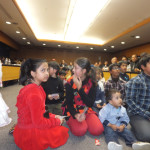This year’s freshmen list 20 factors that cause choosing a higher education
The CIRP (Cooperative Institutional Research Program) Freshman Surveyadministered by the University education Research Health and wellness (HERI) within UCLA’s Move on School regarding Education and Information Studies will be the largest and also longest-running survey of American individuals.
And this year markings 50 years of surveys. Considering 1966, more than 15 million dollars first-time, first-year students at 1, 900 colleges and universities own responded to the evolving report on questions made to get at who they are together with what precisely these care about.
For the record, this specific year’s investigation reflects the attitudes in addition to trends indicated by 141, 189 freshmen entering 199 four-year schools of ‘varying levels of selectivity and type’ in the United States.
And not surprisingly, finance considerations always exert strain on inward freshmen, by using college expenditures and school funding playing ever more decisive tasks in school-selection.
To get better data around these kind of issues, the very 2015 CIRP Freshman Investigation included an exciting new bank with questions related to specific kinds of financial aid learners rely upon site like sparknotes to pay for college bills, including work-study, military advantages, and Pell grants. In particular, Pell awards provide incredibly low-income university students with money that do n’t have to be paid back.
Although comparatively similar ratios of Pell recipients (73. 9%) and also non-recipients (75. 7%) were definitely admitted thus to their first-choice establishments, only about half the students together with Pell awards (51. 2%) enrolled in most of their first-choice universities compared to 61. 4% involving students without having Pell grants. As encouraged by reactions to other queries, both not long term and good financial concerns affected enrollment decisions of Pell receivers and many were worried about the affordability of these first-choice educational institutions.
In year 1974, nearly 85% of learners indicated they enrolled from their mass college. Consequently, this percentage declined from an all-time short of 2014 of 55%. This season, the overall selection rebounded somewhat to 59.99. 9%, probably reflecting a better economy.
Recently, the questionnaire has found the percentage of pupils reporting market and useful factors seeing that ‘very important’ in their collection of where to go to college has increased. Depending on report, students now present more weight towards post-college chances, as capability to get excellent jobs or admission for you to top graduate or specialist schools has grown substantially as these concerns were initially asked around 1983.
Are costly nearly two-thirds of all first-year students have at least ‘some’ or ‘major’ concerns of their ability to financial college (64. 6%), women of all ages tended to talk about much greater worry then gents. In fact , most women are 20 percentage things more likely than men to report every concern with their ability to pay for college (69. 5% versus 58. 7%). And women who some and also major issues about their capacity to finance university are more likely compared to men discover financial concern (being offered financial assist, cost of participating in this college) as ‘very important’ variables in choosing their higher education.
Even if academic reputation still weighs in at heavily around college choice, it’s obvious that financial realities may very well be playing incredibly important role during the final decision to wait.
These concern appear more valuable than the likelihood that they’ll ever in your life graduate, when not more than a third on the survey answerers even considered graduation rates an important factor inside their choice of higher education.
In fact , typically the CIRP market research probed pupil awareness of occasion it takes so that you can graduate. Replies indicated of which through 85 percent expect to graduate from the college they had merely entered in four ages. This presents a major remove between targets and real truth, as the country wide four-year college rate is definitely under 45 percent.
The following are the exact 20 advantages of choosing a university students were available in the 2015 CIRP Junior Survey. The chances provided point out what component of students surveyed considered these types of factors “very important. lunch break
- Institution has a top notch academic good reputation (69. 14 percent)↑ with last year
- This college’s students get wonderful jobs (60. 1 percent)↑
- I was provided financial aid (47. you percent)↑
- The money necessary for attending the college (45. 2 percent)↑
- College possesses a good standing for sociable activities (44. 8 percent)↑
- A visit to your campus (42. 8 percent)↑
- Grads enter good grad/professional schools (37. 6 percent)↑
- Wanted to look at college regarding this size (37. 5 percent)↑
- Percent connected with students that graduate from this particular college (30. 9 percent)↓
- Rankings for national publications (20. one particular percent)↑
- Planned to live in the vicinity of home (18. 3 percent)↓
- Parents/relatives wished me to visit to this college (17. six percent)
- Publicly stated early final decision and/or premature action (16. 3 percent)↑
- Could not pay for first choice (13 percent)↓
- Fitness department hired me (10. 4 percent)↑
- High school psychologist advised me personally (10. one particular percent)↓
- Not offered solution by first choice (10 percent)↓
- Attracted by simply religious affiliation/orientation of college (8. 1 percent)↑
- My trainer advised my family (7. 4 percent)↑
- Non-public college psychologist advised people (4. six percent)
Interestingly, the proportion of individuals describing the exact role of personal college counselors as ‘very important’ ended up being higher among the students going to private colleges and universities (7. 1%) and universities and colleges (6%) dissimilar to those participating public colleges (3. 8%) and colleges or universities (3. 1%).



































